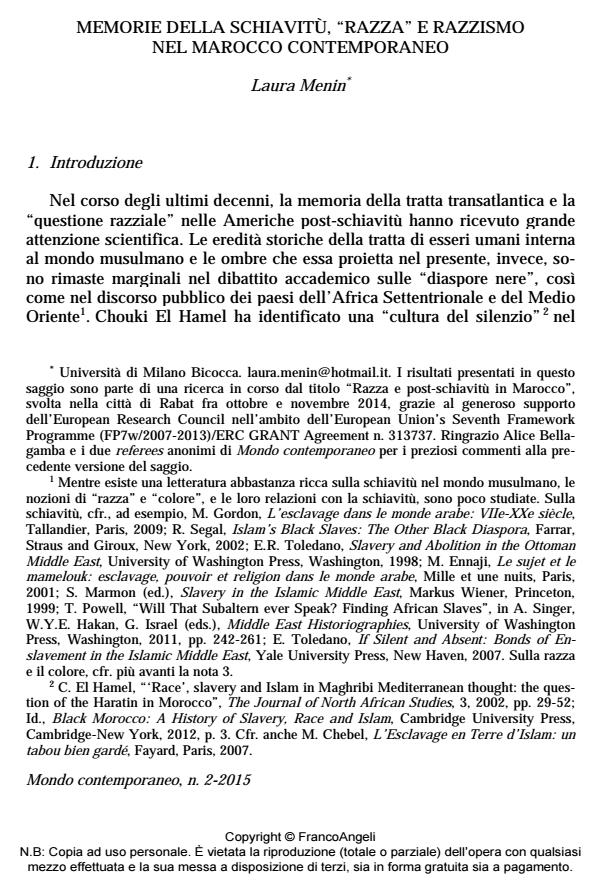Memories of Slavery, "Race" and Racism in Contemporary Morocco
Journal title MONDO CONTEMPORANEO
Author/s Laura Menin
Publishing Year 2015 Issue 2015/2
Language Italian Pages 24 P. 89-112 File size 144 KB
DOI 10.3280/MON2015-002005
DOI is like a bar code for intellectual property: to have more infomation
click here
Below, you can see the article first page
If you want to buy this article in PDF format, you can do it, following the instructions to buy download credits

FrancoAngeli is member of Publishers International Linking Association, Inc (PILA), a not-for-profit association which run the CrossRef service enabling links to and from online scholarly content.
The historical legacies of the slave trade within the Muslim world and the shadows it projects into the present have remained marginal topics in the academic debates on the "black diasporas", as well as in the public discourse of the North African and Middle Eastern countries. This paper aims to contribute to filling this research gap by exploring the issue of "race" and "racism" in contemporary Morocco and its relations to the memory of slavery. Instead of providing an a priori definition of "race", it takes it as a theoretical issue and investigates the historical processes and everyday vocabularies through which "race" and "racism" have come into being, have changed over time and today have become highly contested. By tracing the historical emergence of a racial thought in the 16th century, this paper shows how today the legacy of slavery regards not only slave descendants, but also other socially marginalized groups of people, like the Sub-Saharan migrants. The use of racial stereotypes and vocabularies evoking slavery to address these people testifies to the importance of a historical perspective in the anthropological analysis of the social dynamics that characterize contemporary Maghreb.
Keywords: Legacies of slavery, memory, racism, race, Morocco
Laura Menin, Memorie della schiavitù, "razza" e razzismo nel Marocco contemporaneo in "MONDO CONTEMPORANEO" 2/2015, pp 89-112, DOI: 10.3280/MON2015-002005